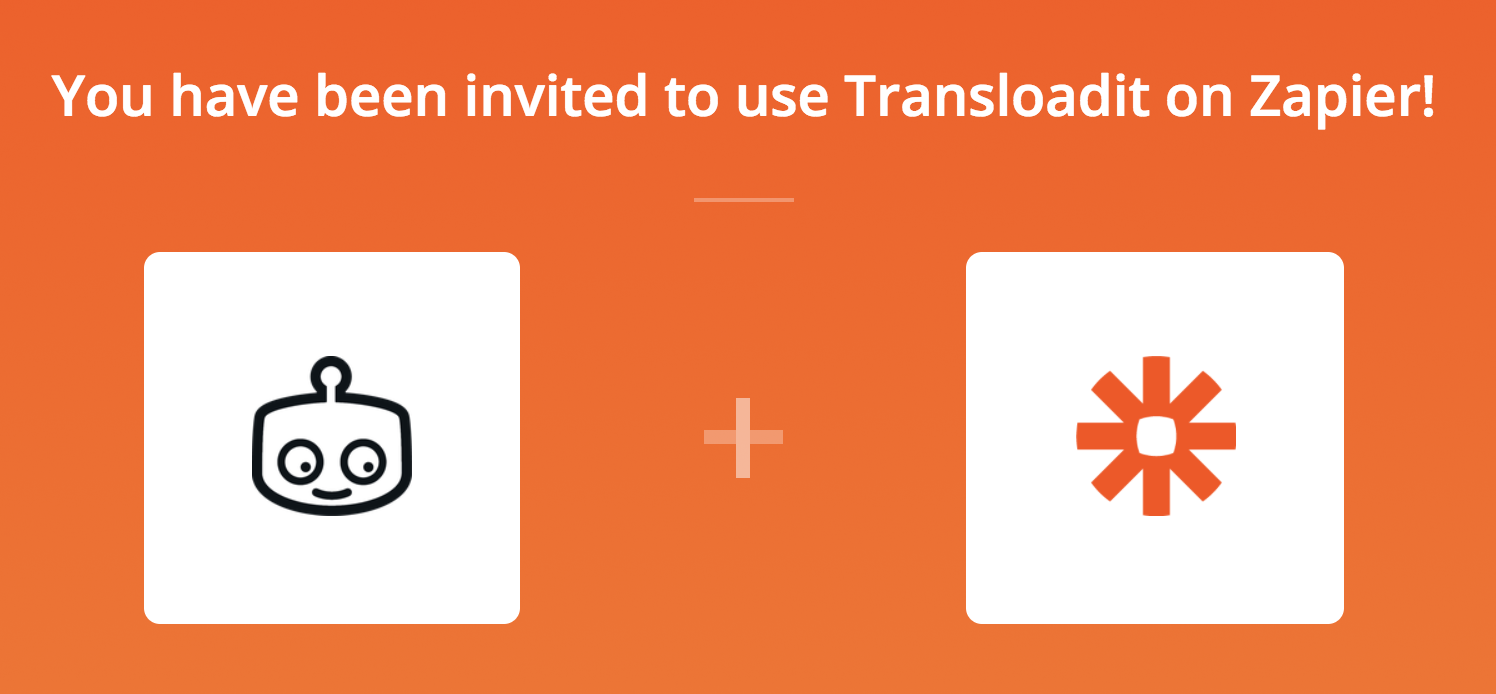Transloadit Zapier Integration

When we first learned about Zapier, we were immediately excited. Zapier lets you take the output of one service (a newly received email, for instance) and then use that for the input of a second service (saving records in a Google sheet). It already allows you to do this for thousands of services. It is somewhat like IFTTT but for businesses, and one of the plus sides is that it does not require a phone to orchestrate. We think it's not a stretch to say that what Transloadit is to files, Zapier is to API services. And that likely explains why the power of Zapier resonates so much with our crew.

As such, we felt it would make a lot of sense to add our service as well to Zapier's quickly growing catalogue. While currently still in private beta, we're already dog-fooding and enjoying tight integration of Transloadit with Dropbox, for instance. This means that you can save a new video to a Dropbox folder, and only a few minutes later, a transcoded version that's optimized for display on iPad gets added automatically. How about that!
"Any sufficiently advanced technology is indistinguishable from magic."
— Arthur C. Clarke
Features
We're excited to launch the Zapier integration of Transloadit’s file encoding goodness in private beta. It’s easy to use (no code required), good for automation, and it comes with some common encoding Templates right out of the box. Below is a non-exhaustive list of things you can do with it right now:
- Optimize video for iPad
- Convert video to the WebM format
- Run face detection on images
Of course, you can also run custom jobs on your files by passing a Template ID instead. This allows you to perform any of the vast list of file operations that are within Transloadit's arsenal on audio, video, images, documents or websites.
Use cases
Due to the combination of thousands of services, the possibilities are virtually endless, but here are a few compelling use cases just to get your imagination going:
- Automatically feed your security camera videos to our /video/thumbs Robot, have faces detected and send them to Slack
- Convert any video uploaded to your file provider account (e.g. Dropbox, Google drive, etc.) to WebM format automatically
- Automatically subscribe to emails with attachments, transparently decompress archives, resize images to 3 different formats, and save them to S3
Howto
To help you get started, we put together two short step-by-step video walkthroughs on adding encoding capabilities to other services on Zapier.
1. Sending videos from Dropbox to Transloadit for iPad Optimization:
2. Sending videos back from Transloadit to Dropbox after iPad Optimization:
Under the hood, Assemblies are tagged with the originating Zap name. This makes it possible to create new Zaps with triggers on actions, such as: 'when the iPad conversion is ready -> message Slack'.
Possible pitfalls to look out for
- Avoid Zap loops: in order to avoid Zap loops, be sure not to trigger Assembly actions in the same folder where your completed Templates files are received. In the case of Dropbox, use one folder for input, and a different one for output. For more information on this, see this Zapier help page.
- If you have issues with Dropbox and large files, check out: Missing Dropbox File field, in large files.
- Transloadit's encoding is non-blocking. If you want to pass a file from Dropbox to Transloadit, you can't use the results in consequential steps. Instead, you should create a second Zap as illustrated below.

Early access
As of now, we are in private beta and hoping to get some testers as a result of this blog post. If you are interested, please click here for a free invite. And if you have any feedback, be sure to hit Reply on the Zapier thread in our brand new community forum!
